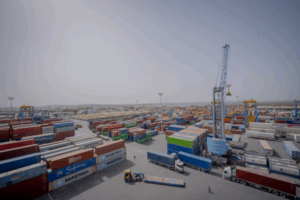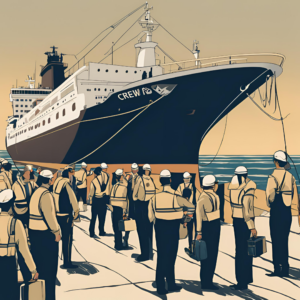5 Details For Proper Use Of Deck Lifting Equipment On Ships
Loading cargo from the port into ships requires the involvement of deck lifting equipment such as cranes and elevators. These types of equipment need to be combined with a checklist of must-dos and don’ts to avoid threats to cargo and life.
All Seas Shipping goes through this checklist for all its deck lifting equipment to ensure proper function and safety.
Here are five of the most important points to verify when operating deck lifting equipment.
1. Loading Plan
A plan must be formulated for all lifting operations involving deck lifting equipment. They must be planned by a competent body of individuals who will assess and identify risks to select the appropriate equipment and method for the operation.
However, the complexity of the plan and the scope of the resources used reflects the difficulty of the lifting operation.
2. Cargo Weight And Working Load Limit (WLL)
As a first step, operators of the lifting equipment must verify and confirm the weight of the cargo to be lifted.
The load must not exceed the Working Load Limit (WLL) found marked on the crane or elevator by the manufacturer. Keep in mind that WLL is one-third of the breaking strength.
So, always make sure to check the WLL before use since it is the maximum allowed.
3. Equipment Certification
All kinds of cranes, hoists, elevators, and other lifting machines must conform to a set of standards to ensure they are safe to handle.
As such, the lifting equipment must go through a procedure of multiple assessments to obtain a certificate of conformity.
4. Operator Qualification
Each lifting equipment or machinery must be operated by a professional who has the necessary skills and the right knowledge.
As well as being able to preliminary assess a load by visual alone, the operator must be familiar with the lifting plans and regulations.
5. Lubrication, Wires, And Clamp Check
All the parts of the lifting machinery must be checked for sufficient lubrication and hydraulic oil levels. A periodic check and maintenance are crucial for efficient lubrication.
Another significant part of the maintenance procedure is to ensure that all wires are renewed at specified intervals, while a more frequent checking of deformations and corrosions is recommended.
Finally, while lifting cargo, assuring the securing clamps are well fitted and not defective is primordial.
Conclusion
Deck lifting equipment is indispensable when it comes to loading heavy cargo on ships, but the operations involving them can present a lot of risks for the goods as well as human lives. For that reason, All Seas Shipping goes through the checklist discussed above to ensure that the operation is performed safely and reliably.






